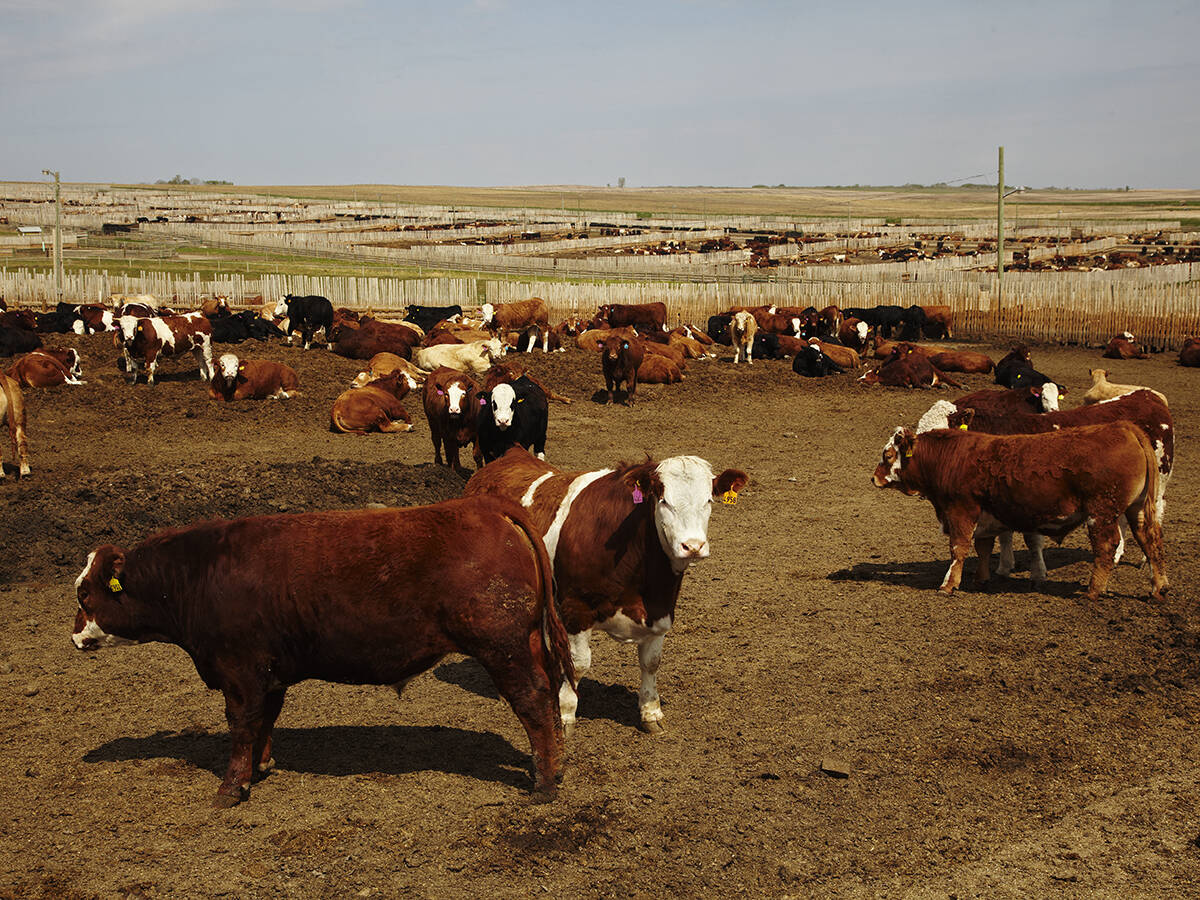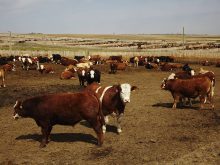This cattle market information is selected from the weekly report from Canfax, a division of the Canadian Cattlemen’s Association. More market information, analysis and statistics are available by becoming a Canfax subscriber by calling 403-275-5110 or at www.canfax.ca.
Fed cattle fall
The fed market gave back the gains from the previous week’s sharp rally.
The Canfax fed steer weighted average was $180.02, down $11.49, while heifers were $179.19, down $5.33.
Read Also

Canfax cattle market report – November 13, 2025
The Canfax cattle market report for November 13, 2025. Fed & feeder cattle prices, butcher cow trends, and cutout market insights.
It is likely that the spring high is now behind us.
Terminal feedlots, background lots and farmer type feeders marketing their own calves all sold cattle in the past week.
Dressed sales for end of May delivery ranged from $300-$305 delivered. The price for June 5 delivery was $296.
American packers bought a few Canadian cattle.
U.S. buyers were again looking for quick delivery cattle.
U.S. sales were at a slight premium to local sales, depending on freight and dressing percent.
U.S. bids worked back to the mid $180s on a live basis.
Excluding the holiday-shortened week, western Canadian slaughter volumes have been consistent over the past seven weeks, ranging from 39,500-41,900.
With more fed cattle expected to go south in the next couple of weeks, one or possibly both major Alberta plants might reduce hours.
Cash-to-futures basis levels remain historically strong.
Alberta fed prices were +10.24 over the June Chicago live contract.
It may take time, but as cattle become available seasonally, packers will gain leverage.
As this leverage shift happens there will be more basis and price risk in the fed market.
In the U.S., dressed sales in the north were US$220-$224, down $8-$10 from previous week.
Southern regions traded at mostly $138 live, down $7.
U.S. steer carcass weights averaged 847 pounds, the lowest since May 2014.
Non-fed prices mixed
D1, D2 cows ranged $100-$118 to average $109.98, down 97 cents. D3 cows ranged $90-$105, down $2.50.
The rail grade range was $207-$212 per cwt. delivered.
Bulls averaged $127.11, up 65 cents.
Western Canadian non-fed slaughter for the week ending May 6 was down 16 percent at 5,453 head. For the year, slaughter is up seven percent.
Feeder cow and D1/2 prices should remain well supported.
Seasonally, slaughter cow supply is expected to tighten, helping to support prices.
Feeders rise
Alberta feeder prices continued to rally, even with the seasonally large offering. On average, steers were up $2.69 and heifers rose $4.03.
There was broad based buyer interest on calves lighter than 600 pounds. The steer-heifer price spread tightened with fewer quality steer calves and more heifers on offer.
Feeders 600-800 lb. rose $4-$5.50, while feeders heavier than 800 lb. were steady to $1 higher.
Eastern buyers focused on heavy bunk replacements.
Auction volumes were huge for this time of year, totalling more than 31,000 head.
North and central Alberta auction volumes swelled. Producers there have been battling muddy conditions through calving and have been distracted from marketing feeders because of delayed harvest and spring field work.
For the year, auction volume is up 18 percent at 548,047 head.
The strong prices are pulling feeders to market. Some backgrounders have flipped feeders and taken profits now rather than go to grass. This may have contributed to increased auction traffic.
Feeders heavier than 700 lb. continued to rise, tracking the seasonal trend.
Weekly exports to April 29 dipped to 5,396 head. For the year, exports are down 35 percent. As supplies tighten, feeder prices typically rise until yearlings begin to come off grass in late August.
Bred cows ranged $1,450-$2,000.
U.S. beef strong
Choice was US$246.86 per cwt., up $11.28, and Select was $226.66, up $9.82.
In the past month, Choice soared 19 percent and Select 15 percent and are now 10-15 percent higher than a year ago.
With the fed market coming off its highs, a softer tone may develop in the boxed beef market.
However, demand for grilling items for the coming spring and early summer holidays will support prices.
Canola prices were unavailable.














